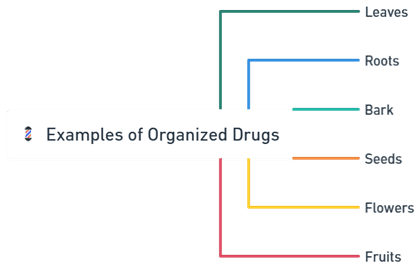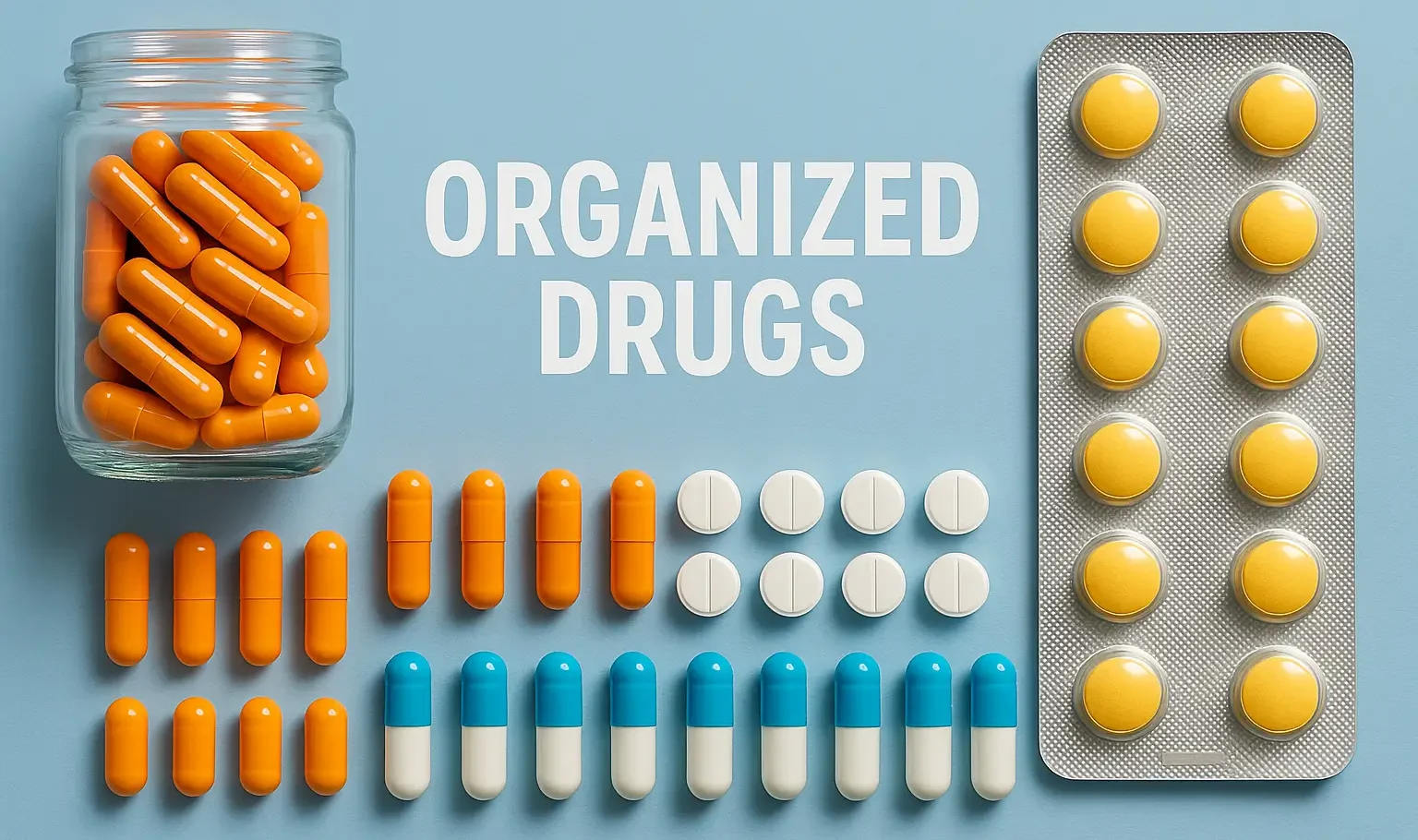- Organized drugs refer to those derived from higher-order structures of plants or organisms.
- They maintain the complex architecture of the source material, such as leaves roots, stems, bark, seeds, fruits, and flowers.
- These drugs are typically obtained by physical processes like drying, grinding, or decoction without altering their fundamental structure.
Characteristics:
- Derived from specific plant parts (e.g., leaves, roots).
- Retain the anatomical structure of the source.
- Often require physical processing (drying, grinding) for use.
- Contain a mixture of various phytochemicals.
Examples of Organized Drugs:

-
Leaves:
- Moringa oleifera (Drumstick Tree): Leaves are rich in vitamins, minerals, and antioxidants.
- Aloe vera: Leaves contain gel used for its soothing and healing properties.
-
Roots:
- Ginseng (Panax ginseng): Roots are valued for their adaptogenic properties, enhancing stamina and reducing stress.
- Ginger (Zingiber officinale): Roots are used for their anti-inflammatory and digestive benefits.
-
Bark:
- Cinchona tree (Cinchona officinalis): Bark is the source of quinine, used to treat malaria.
- Willow tree (Salix spp.): Bark contains salicin, a precursor to aspirin, used for pain relief.
-
Seeds:
- Strychnos nux-vomica: Seeds contain strychnine, a potent neurotoxin used in small doses for certain medical applications.
- Coriander (Coriandrum sativum): Seeds are used as a spice with digestive benefits.
-
Flowers:
- Chamomile (Matricaria chamomilla): Flowers are used for their calming and anti-inflammatory effects.
- Calendula (Calendula officinalis): Flowers are utilized for their antiseptic and healing properties.
-
Fruits:
- Capsicum (Bell Peppers): Fruits contain capsaicin, used in topical creams for pain relief.
- Citrus fruits (e.g., oranges, lemons): Fruits are rich in vitamin C and used for their antioxidant properties.
Advertisements
Extraction and Processing:
- Organized drugs often require specific extraction methods to obtain the desired medicinal compounds.
- Techniques include:
- Decoction: Boiling plant parts to extract water-soluble constituents.
- Infusion: Steeping plant parts in hot water, similar to making tea.
- Grinding: Pulverizing plant material to increase the surface area for extraction.

